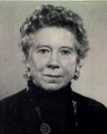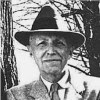Undaunted Courage : Meriwether Lewis, Thomas Jefferson and the Opening of the American West (abridged) (audiobook) by Stephen E. Ambrose

Wonderful, just wonderful. Published by Simon and Schuster Audio Read by Cotter Smith Duration: 4.5 hours Abridged A family friend gave me the abridged audio version of this book that has been on my "to read" list for years. I'd never quite gotten around to it but, boy, am I glad I finally did. Meriwether Lewis (1774-1809) In Ambrose's hands the story of the Lewis & Clark expedition is lifted from the stale and stilted pages of the history textbooks and it becomes an exciting narrative - full of adventure, wonder and tons of hard work. Ambrose is a gifted writer. I am reminded of the David McCullough quote: "No harm's done to history by making it something someone would want to read." No danger of that with Ambrose. Not only has he read everything there is to be found on the topic but has traveled the route several times. William Clark (1770-1838) Cotter Smith did a great job of reading the text and keeping up









